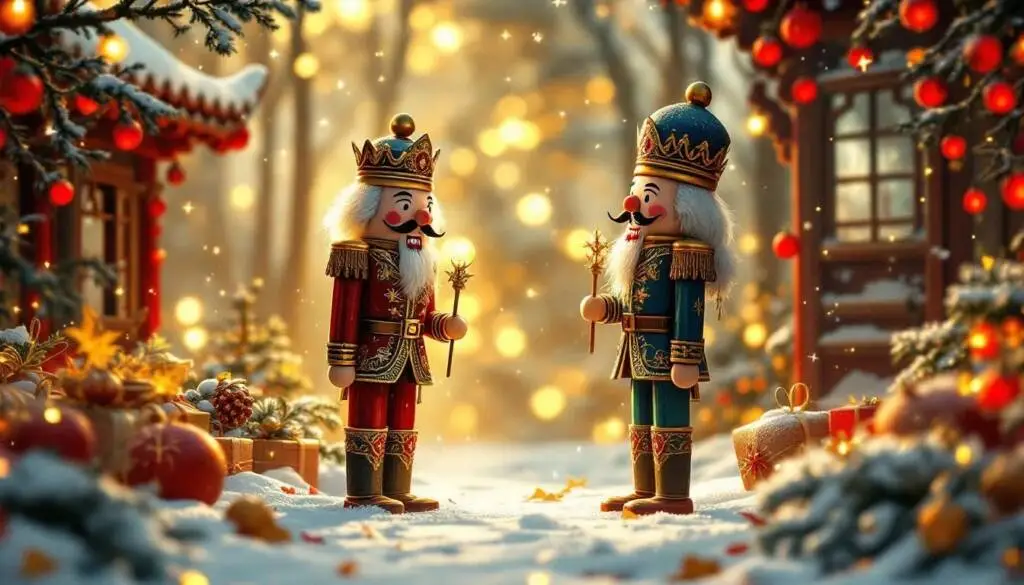The tradition of nutcrackers dates back to the 18th century in the Erzgebirge region of Germany. Initially, these wooden figures were simple tools used for cracking nuts. Over time, they evolved into decorative items, often crafted to resemble various characters. The first nutcrackers were made by local artisans who sought to create functional yet artistic pieces.
The popularity of nutcrackers surged in the 19th century, particularly after the introduction of the first mass-produced nutcracker by the German company Steinbach in the 1870s. This marked the beginning of nutcrackers as collectible art pieces rather than just functional tools.
Craftsmanship
-
Materials: German nutcrackers are primarily made from high-quality wood, such as beech or pine. The choice of wood is crucial, as it affects the durability and appearance of the final product.
-
Handcrafted Techniques: Many nutcrackers are handcrafted by artisans using traditional techniques passed down through generations. This includes carving, painting, and finishing the figures by hand, which adds to their uniqueness.
-
Design Elements: The designs often feature intricate details, such as painted facial expressions, elaborate costumes, and accessories. Artisans may use natural dyes and paints to achieve vibrant colors while maintaining a traditional aesthetic.
-
Mechanism: The nut-cracking mechanism is typically a lever system that allows the figure’s mouth to open and close. This mechanism is designed to be functional and visually appealing, often integrated seamlessly into the figure’s design.
Cultural Significance
-
Symbolism: In German folklore, nutcrackers are believed to bring good luck and protect the home. They are often seen as guardians against evil spirits, making them a popular decoration during the Christmas season.
-
Christmas Traditions: Nutcrackers are commonly associated with Christmas markets and holiday celebrations in Germany. They are often displayed alongside other festive decorations, such as Christmas trees and lights.
-
The Nutcracker Ballet: Tchaikovsky’s ballet The Nutcracker, which premiered in 1892, has also enhanced the popularity of the Nutcracker. The ballet has become a holiday classic, further embedding the Nutcracker in Christmas traditions worldwide.
Collecting German Nutcrackers
-
Types of Collectible Nutcrackers:
- Traditional Figures include soldiers, kings, and other classic designs that reflect the original purpose and style.
- Limited Editions: Many artisans and companies release limited-edition nutcrackers that can become highly sought after by collectors.
- Themed Collections: Some collectors focus on specific themes, such as holiday characters, animals, or historical figures.
-
Where to Buy:
- Christmas Markets: Visiting German Christmas markets is a great way to find authentic nutcrackers directly from artisans.
- Specialty Shops: Look for stores specializing in German crafts or holiday decorations online and in physical locations.
- Antique Stores: Antique shops may carry vintage or rare nutcrackers that can be valuable additions to a collection.
-
Care and Maintenance: To preserve the beauty and functionality of nutcrackers, they must be handled with care. Avoid exposing them to excessive moisture or direct sunlight, and clean them gently with a soft cloth.
-
Value: The value of a nutcracker can vary significantly based on factors such as age, rarity, craftsmanship, and condition. Collectors often seek out pieces with unique designs or those made by renowned artisans.
Conclusion
German nutcrackers are more than just decorative items; they blend art, tradition, and cultural significance. Whether you are interested in them for their functionality, aesthetic appeal, or as collectibles, they offer a rich history and a connection to German craftsmanship and holiday traditions. Whether displayed during the festive season or collected year-round, these charming figures continue to captivate people worldwide.
Disclaimer:
The information provided in this blog is for informational purposes only and should not be considered professional advice. While we strive to provide accurate and up-to-date information, we make no guarantees about the completeness or reliability of the content. Any actions you take based on the information in this blog are at your own risk. Additionally, this blog may contain affiliate links, and we may earn a commission from purchases made through those links.


